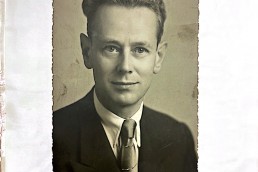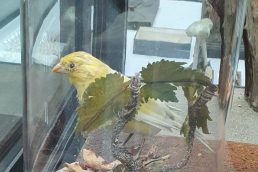Sir Thomas Barlow was born in Brandwood Fold, Edgworth, Bolton in 1845, to Alice and James Barlow, a well-known philanthropist, industrialist, and the Mayor of Bolton in his time. You can find out more about James Barlow here.
Thomas was married to Ada with whom he had five children, his eldest son Sir James Alan Noel Barlow married Charles Darwin’s Granddaughter and became the Principal Private Treasurer for Ramsey Macdonald the first Labour Party Prime Minister. He had two other sons one of which died fighting in the first world war, and his youngest daughter Gertrude died in infancy.
Thomas started his further education at Owens Collage in Manchester, winning many prizes in scientific fields. He then went on to study medicine at University College London and qualified in 1871. Thomas was a well-respected and educated Physician but was also known for his ‘shrewd Lancashire commonsense’ (G H Brown, 2019) He was said to be a caring and kind Doctor, but his fame came from a discovery on scurvy in 1883, which was that scurvy in infants was exactly the same as it was in adults, confusion at the time between rickets and scurvy in children cause him to research it further and found this discovery. In 1894 he gave a lecture about the disease which can be accessed HERE and it became known as Barlow’s Disease.
Scurvy is a deficiency of vitamin C occurring from a poor diet. In the Victorian era scurvy was a major killer of sailors, sometimes killing over half the crewmen aboard before landing in dock. It was also prevalent in poor children due to lack of fresh fruit and vegetables. It was often related to rickets in children which was discovered to be incorrect and was in fact scurvy.
Barlow was eight months from being 100 years old when he died in 1945, and in his obituary, it was said he was still robust and sound of mind almost until the end. Barlow was an extraordinary man and Physician. He was also Queen Victoria’s Doctor and was present when she passed away, he also attended the next two Kings. He was knighted in 1901 and became a Baronet the following year. By all accounts Sir Thomas Barlow was an extraordinary man and Physician and Boltonian.




1874
Sir Thomas gained a registrarship at the Hospital for Sick Children.
1876
Sir Thomas was an assistant physician at Charing Cross hospital.
1880
Returned to University Collage Hospital, where he remained on staff until his retirement in 1910.
1883
Discovered Infantile Scurvy as being identical to Adult Scurvy.
1896-1910
Physician Extraordinaire to HRH Queen Victoria.
1910-1914
President at the Royal College of Physicians.
Sir Thomas Barlow was born in Brandwood Fold, Edgworth, Bolton in 1845, to Alice and James Barlow, who was a well-known philanthropist, industrialist, and the Mayor of Bolton in his time. You can find out more about James Barlow, here.
Thomas was married to Ada with whom he had five children, his eldest son, Sir James Alan Noel Barlow married Charles Darwin’s granddaughter and became the Principal Private Treasurer for Ramsey Macdonald, the first Labour Party Prime Minister. He had two other sons; one died fighting in the first world war, and his youngest daughter Gertrude, died in infancy.
Thomas started his further education at Owens Collage in Manchester, winning many prizes in scientific fields. He then went on to study medicine at University College London and qualified in 1871. Thomas was a well-respected and educated Physician but was also known for his ‘shrewd Lancashire commonsense’ (G H Brown, 2019). He was said to be a caring and kind doctor, but his fame came from a discovery relating to scurvy in 1883. Barlow found that scurvy in infants was exactly the same as it was in adults. There had been some confusion at the time between rickets and scurvy in children, which had prompted Barlow’s research. In 1894 he gave a lecture about the disease which can be accessed here; it became known as Barlow’s Disease.
Scurvy is a deficiency of vitamin C occurring from a poor diet. In the Victorian era, scurvy was a major killer of sailors, sometimes killing over half the crewmen aboard before landing in dock. It was also prevalent in impoverished children due to a poor diet, lacking in fresh fruit and vegetables. This was often associated with rickets in children, when it was in fact scurvy.
Barlow was eight months from being 100 years old when he died in 1945, and in his obituary, it was said he was still robust and sound of mind almost until the end. Barlow was an extraordinary man and Physician. He was also Queen Victoria’s doctor and was present when she passed away. He also attended on the next two Kings. Barlow was knighted in 1901 and became a Baronet the following year. By all accounts Sir Thomas Barlow was an extraordinary man, physician and Boltonian.
1874
Thomas gained a registrarship at the Hospital for Sick Children.
1876
Thomas was an assistant physician at Charing Cross hospital.
1880
Returned to University Collage Hospital, where he remained on staff until his retirement in 1910.
1883
Discovered Infantile Scurvy as being identical to Adult Scurvy.
1896-1910
Physician Extraordinaire to HRH Queen Victoria.
1910-1914
President at the Royal College of Physicians.
Bibliography
Brown, G., (2019) Sir Thomas Barlow | RCP Museum. [Online] History.rcplondon.ac.uk. Available at: <https://history.rcplondon.ac.uk/inspiring-physicians/sir-thomas-barlow> [Accessed 6 May 2021].
Boltonsmayors.org.uk. James Barlow. [Online] Available at: <http://www.boltonsmayors.org.uk/barlow-j.html> [Accessed 6 May 2021].
Elliot, T., (n.d.) Thomas Barlow. Royalsocietypublishing.org. [Online] Available at: <https://royalsocietypublishing.org/doi/pdf/10.1098/rsbm.1945.0010> [Accessed 6 May 2021].
NHS (2021) Scurvy. [Online] Available at: <https://www.nhs.uk/conditions/scurvy/> [Accessed 6 May 2021].
Redman, A. (2008) Plaque to Thomas Barlow at his birth place. [Online photograph] Available at: <https://commons.wikimedia.org/wiki/File:Thomas_Barlow_birth_place.jpg> [Accessed 6 May 2021].
Sir Thomas Barlow, Bt by Walter Stoneman, 1923. (2014). In National Portrait Gallery London (Ed.), National portrait gallery image collection. [Online]. London: National Portrait Gallery, London. Available from: <https://login.ezproxy.bolton.ac.uk/login?url=https://search.credoreference.com/content/entry/npg/sir_thomas_barlow_bt_by_walter_stoneman_1923/0?institutionId=3065> [Accessed 11 May 2021].
UCL Great Ormond Street Institute of Child Health. Sir Thomas Barlow. [Online] Available at: <https://www.ucl.ac.uk/child-health/support-services/library/library-historical-collections/staff-publications/sir-thomas-barlow> [Accessed 6 May 2021].












